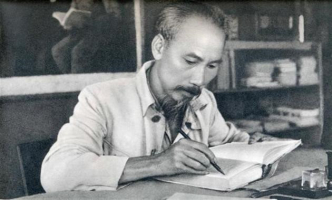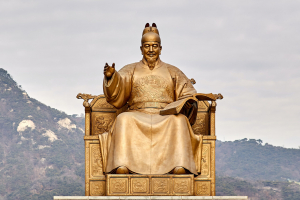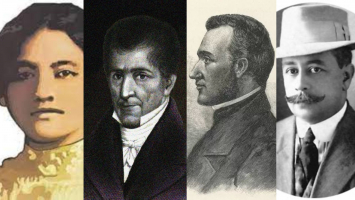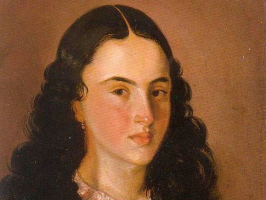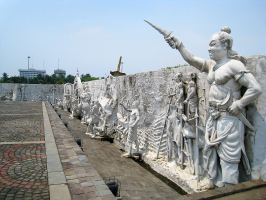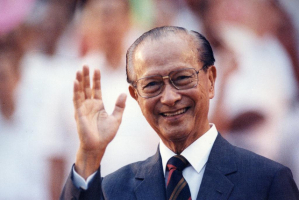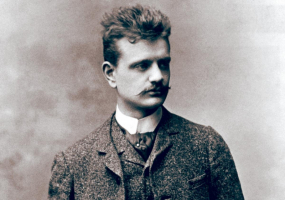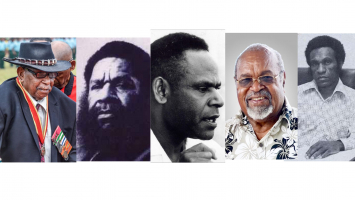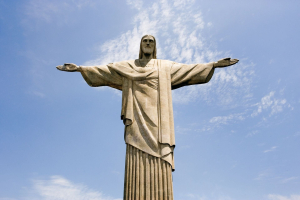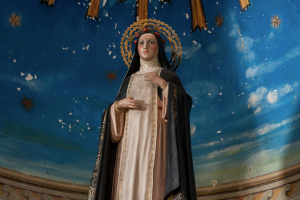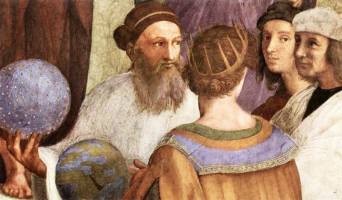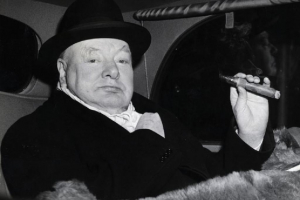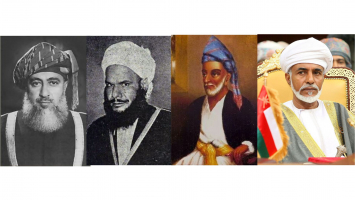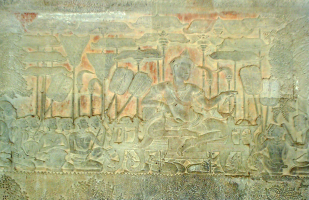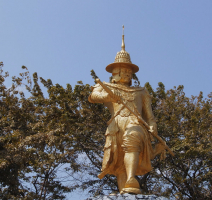Top 10 Popular Myths About Historical Figures
The two pillars that previously supported the arch are still surviving as a result of natural erosion. The crosspiece, though, is now a part of the ocean ... read more...floor.
-
The practice of cryonics involves freezing a human body shortly after death in the hope that future medical advancements may enable us to resurrect it. Sometimes only the head is required; the full body is unnecessary. We would have outgrown the need for a body by the time medical science has developed to the point where resurrections are feasible, and we would be able to implant our brain into a computer, an android, a smart toaster, or something similar. There are many people who have put their faith in cryonics for a long life, including, if the lore is to be accepted, its most well-known benefactor, Walt Disney.
According to a well-known urban legend, the CEO of the Disney Corporation is presently frozen, waiting for science to eliminate the concept of "death." Some even claim that it is kept beneath the "Pirates of the Caribbean" rollercoaster at Disneyland.
There is no proof that Walt Disney ever froze himself, let alone that he had any interest in cryonics. The rumor was disproved by his own daughter, and records indicate that Disney had his remains cremated after passing away. Others claim that a few mischievous Disney employees began the rumor, while others accuse a reporter for a bygone tabloid named The National Spotlite.
Image by Benjamin Suter via pexels.com 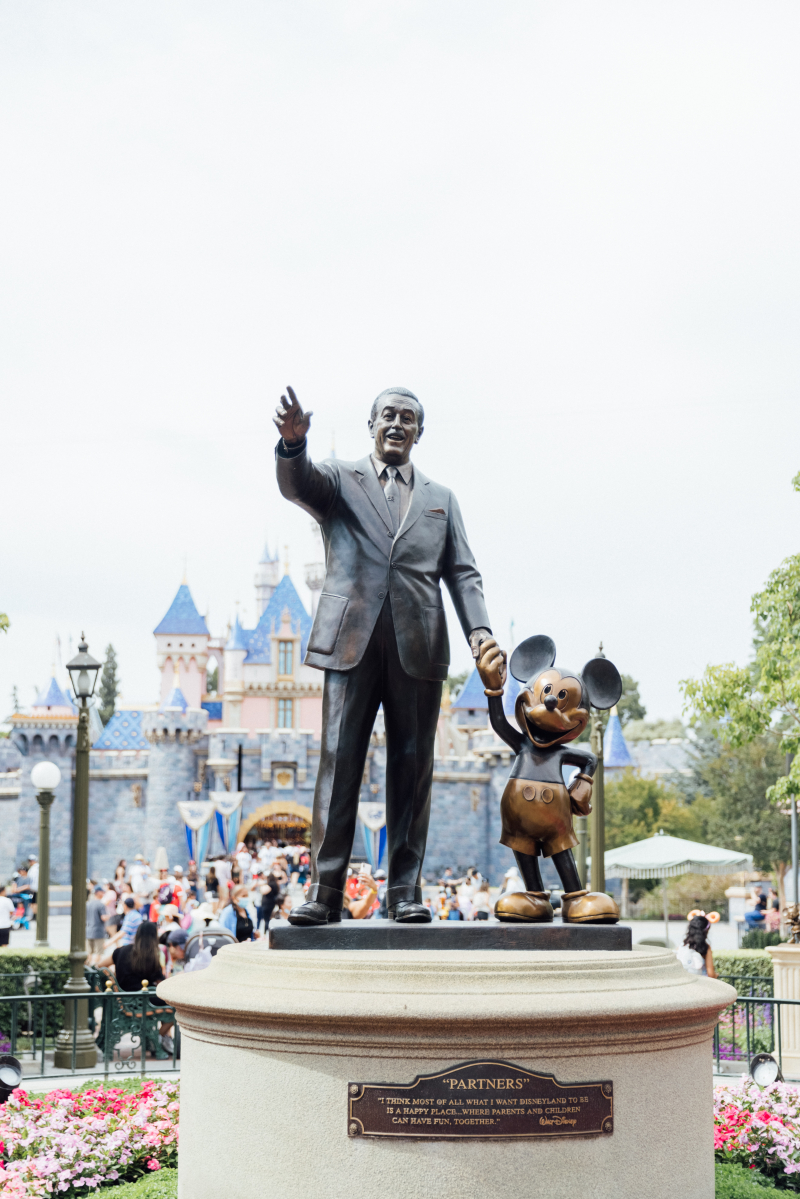
Image by steven lozano via pexels.com -
The band KISS is well renowned for its nighttime rock and roll, daytime partying, and extravagant and theatrical live shows. In addition to cosmetics, there are rockets, fireworks, smoking guitars, fire breathing, and pyrotechnics. In addition to all of that, bassist Gene Simmons gained notoriety for his extraordinarily long tongue, which he openly flaunted at every chance. In fact, his tongue became so well-known that some people began to question whether it was indeed genuine. It quickly spread that Simmons had surgically removed his own appendage and replaced it with a cow tongue to improve his appearance.
Of course, this is ludicrous for a variety of reasons. A cow's tongue is over 20 times larger than a human's, so the difference would have been highly visible, in addition to the fact that tongue transplants were medically unfeasible in the early 1970s when KISS initially achieved fame. Additionally, despite the fact that Simmons' tongue is big, it is not the biggest tongue ever or anything of the sort. Simply put, it is bigger than usual. Finally, the man himself dispelled the myth. Although he acknowledged that his words were entirely those of Gene Simmons, he described this allegation as his "favorite KISS rumor."

Image by Gizem Nur via pexels.com 
Image by Halil İbrahim Özcan via pexels.com -
One of the most well-known appetizers in the world has a history of accidental creation and resentment. A man went to Moon's Lake House in Saratoga Springs, New York, one day in 1853 and ordered fried potatoes. The man complained that his dinner wasn't salty or crispy enough and that the fries were too thick when it was delivered.
George Crum, also known as George Speck, was the restaurant's chef. He was of Native American and African American origin, and he didn't like picky diners. His potatoes were overly substantial? Well, he cut them as thinly as he could. These weren't sufficiently salted or crispy? So, he boiled them until they were crunchy and then salted them. The customer loved them, much to Crum's astonishment, and so potato chips, or Saratoga chips, as Crum named them, were created.
Some versions of the narrative assert that railroad magnate Cornelius Vanderbilt was the benefactor, which only serves to enhance how surreal the story already is. Regrettably, there is no evidence to support any of the story's claims to be real. Even though Crum was regarded as one of America's greatest chefs of the day, no one, not even Crum himself, credited him with creating the potato chip throughout his lifetime. After his passing, this rumor began to circulate, and it is still unclear who actually invented what.
Image by Olga Kozachenko via pexels.com 
Image by Mustafa Bashari via pexels.com -
Scientist George Washington Carver made significant contributions to agricultural economics in the United States, especially in the South, which was overly dependent on cotton crops. Yet, he is mostly known as the "peanut butter guy," which not only downplays his achievements but is also untrue.
Carver, who was born into slavery, aimed to make black sharecroppers' farms more productive so they could pay off the debt they owed to white plantation owners. Although cotton was by far the most lucrative crop in America, it was also quite hard on the soil. The majority of black farmers had no choice but to plant the most lucrative crop since they were barely making ends meet on razor-thin profit margins.
Carver urged them to use crop rotation and rotate between crops so that the land may have time to recover because producing cotton continuously depleted the soil of nutrients. Carver began to think of countless uses for soybeans, sweet potatoes, and, of course, peanuts since farmers would only agree to do this if they could genuinely profit from those other products.
Carver came up with more than 300 uses for peanuts, including shaving cream, glue, shampoo, and various delicacies. Nevertheless, since peanut butter already existed, it was not one of them. Prior to modern times, the Incas and the Aztecs both produced a paste from roasted peanuts, and Dr. John Harvey Kellogg was one of several people to submit a patent application for peanut butter.
Image by Karolina Grabowska via pexels.com 
Image by Karolina Grabowska via pexels.com -
Since that "Einstein" has come to be associated with genius and that he was a legendary figure, it is not surprising that numerous myths have developed around him. The most well-known of these was undoubtedly that Einstein struggled with math in elementary school. Since it makes us feel better about our own errors and failings and gives us hope that one day we can change everything, this tale is well-known.
While the last section is undoubtedly plausible, the Einstein-related portion is not, while having some element of truth. By the time he was 11, Albert Einstein was already studying geometry, physics, and algebra at the collegiate level. He was gifted in these subjects from an early age. It is true that he failed an exam, though it wasn't in elementary school; rather, it was the Zurich Polytechnic entrance exam. When Einstein first attempted it, he was just 16 years old, and he failed because the tests were in French, a subject that the young Albert did find difficult. Even so, he answered every arithmetic question correctly.
Another potential origin for the tale was a flip in his school's grading scheme. Anyone looking at Einstein's academic record would observe that, at one point, he began receiving a lot of 6s, even though a 1 should have been the highest grade. But, Einstein didn't overnight become illiterate. The grade order was simply inverted at the school, with grade 6 being the highest. Sorry, but Einstein has always been a child prodigy no matter how you look at it.
Image by Chris Liverani via unplash.com 
Image by Dan Cristian Pădureț via unplash.com -
Although Charles Lindbergh may be the most well-known aviator in history, many people would likely answer incorrectly if you asked them what made them so famous. Some claim that Lindbergh's voyage from New York to France on the Spirit of Saint. Louis in May 1927 was the first transatlantic flight.
There is little doubt that Lindbergh's trip was a turning point in aviation history—or perhaps human history, for that matter—but there are two key details that are often overlooked: it was the first solo and nonstop transatlantic flight. That meant Lindbergh made a direct flight from point A to point B without making any pauses in between, and he did it by himself. Although it is still an impressive accomplishment, it takes away from the reality that many other people flew over the Atlantic before him.
If we're seeking for the first nonstop transatlantic trip, John Alcock and Arthur Brown deserve the title because they completed it successfully in June 1919, eight years before Charles Lindbergh. The crew of the Curtiss NC-4 flying boat, under the direction of Rear Admiral Albert Cushing Read, completed the voyage in 19 days after making several landings for repairs. If we're seeking for the first transatlantic flight in history, we just need to check a few weeks earlier, to May 1919.
Image by Ross Parmly via pexels.com 
Image by William Bayreuther via pexels.com -
Did you know that Ronald Reagan almost played the lead role in Casablanca during his film career? Most people are aware that Reagan was an actor before entering politics and eventually ascending to the position of President of the United States.
This interesting bit of cinematic trivia is frequently offered as an entertaining "what if" of Hollywood lore. What if Humphrey Bogart didn't get his most enduring part? Without him, would Casablanca have continued to be popular? Would Ronald Reagan be discouraged from entering politics if the movie was a success?
Reagan and Casablanca just isn't true, as it was before, but this time, we actually know how the myth was established. It was the consequence of a press release issued by the Warner Bros. PR department in early 1942, which announced that Ronald Reagan and Ann Sheridan would be in the film. Yet, it was still so early in the pre-production process that neither casting nor development on the screenplay had begun. The sole purpose of these press releases, which were very typical at the time and used only to promote the studio's stars, was to provide no actual information.
Although it is true that he initially preferred Ann Sheridan over Ingrid Bergman, producer Hal Wallis, who had the final say in casting, later claimed that he never really considered anyone else for the role.

Image by Obregonia D. Toretto via pexels.com 
Image by Donald Tong via pexels.com -
Throughout his life, Fidel Castro wore a variety of hats, including activist, revolutionary, political radical, guerrilla leader, and brutal tyrant. And according to a persistent tale, he nearly put on the hat of a New York Yankee. It cannot be denied that Fidel Castro loved baseball a much. Having played the sport during his undergraduate years in Havana, he was also reasonably good at it.
Yet there is a huge difference between being "decent" and becoming a Yankee. Castro was never good enough to enter the professional ranks, but a common legend holds that he was once a prospect for the Yankees in the 1950s, periodically switching to the Washington Senators.
This myth may have had a kernel of truth, like many good myths, which helped it develop. Castro might have participated in a large-scale audition organized in Cuba by Joe Cambria, a renowned baseball scout who was in charge of bringing a large number of Cuban players to America, but this is not a certainty. Castro would never have been given much thought even if this had occurred, but he enjoyed the tale and never attempted to put it down.

Image by Steshka Willems via pexels.com 
Image by Steshka Willems via pexels.com -
Celebrity demises are always a rich source of urban legends and myths, whatever how dismal they may be. For instance, did you know that Mama Cass, a.k.a. Cass Elliot, who was a member of the Mamas & the Papas at the time of her passing, choked to death on a ham sandwich? Well, it's not accurate, but the rumor has persisted ever since her tragic death on July 29, 1974, in London.
It's unclear exactly who came up with this concept. Some accuse a negligent Met cop who spoke to the media of being at fault. Others contend that the first doctor on the scene was at fault since he, too, spoke to the media when he shouldn't have and suggested that the presence of a half-eaten ham sandwich close to the body may have been related to the cause of death. This was all that some dishonest journalists needed to create a horrible but dramatic end for the singer, as Cass Elliot's weight had long been the target of media jokes.
Elliot's manager, Allan Carr, who knowingly spread the notion but with better motives, was a third potential source for the information. In addition to being overweight, Cass Elliot also had a significant drug addiction, so when Carr learned that she had passed very unexpectedly, he immediately concluded that she had overdosed and decided that the ham sandwich explanation would be less embarrassing.
After conducting the autopsy, British pathologist Keith Simpson determined that a heart attack was the cause of death. Elliot had neither ham sandwiches nor narcotics in his system at the time, but the rumor had already been confirmed.
Image by Eaters Collective via unplash.com 
Image by Eaters Collective via unplash.com -
Without a question, Benjamin Franklin was a highly intelligent man. As he was such a prolific inventor, he is frequently given credit for things he had no business with, despite the fact that there is a long list of valuable products that he either invented or helped improve. The practice of advancing the clocks by one hour in the spring to fully take advantage of the sunshine and reverting them in the fall is one such example of daylight saving time.
The concept that this idea originated with the Founders dates back to 1784. The 78-year-old Franklin was then residing in Paris and working as an American envoy there. He argued in an essay that was published in the April 26 issue of the Journal de Paris that if Parisians rose up with the sunrise, they would save a lot on candles.
But here's the deal. Franklin wrote a blatantly satirical piece. He described how he was inadvertently awakened at six in the morning by a random noise and found his room drenched in sunlight, becoming the first person in Paris to learn that the sun rises so early. Additionally, he detailed how he told his friends about it and how they rejected the idea that it was feasible.Franklin also didn't mention moving the clocks ahead. Instead, the remedies he suggested (again, in jest) were to charge shuttered windows that blocked the light, to cap the weekly sale of candles at one pound per family, to sound the church bells at six every morning, and last but not least, to shoot cannons into the streets to rouse everyone up.

Image by Adeolu Eletu via unplash.com 
Image by Gabe via unplash.com














